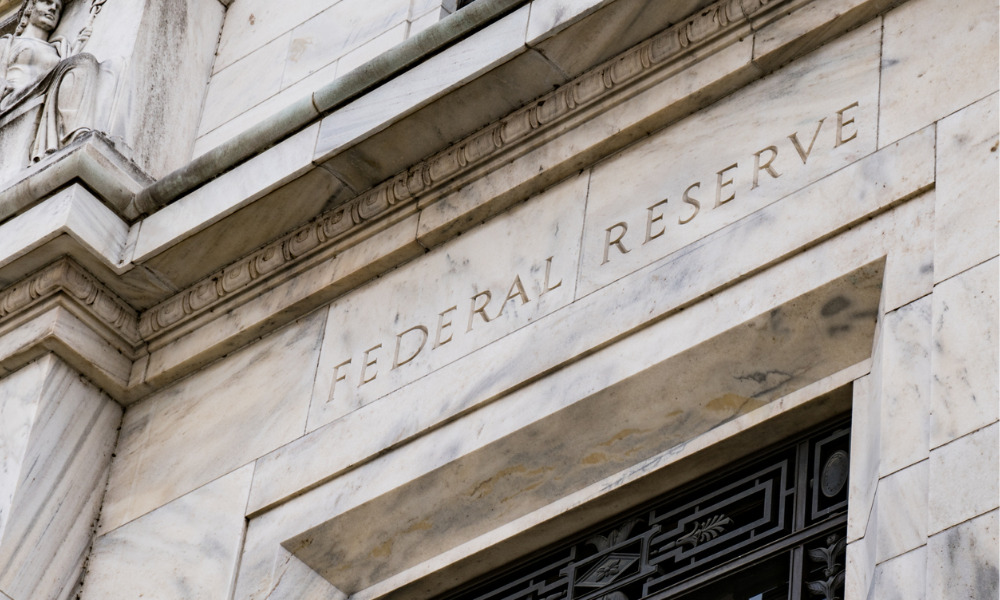Analyst outlines takeaways from yesterday's Fed decision, highlights why Russell Investments believes the Fed may cut more than anticipated

The Federal Reserve announced yesterday that it plans to hold interest rates steady between 5.25 and 5.5 per cent. That decision by the Fed was greeted by investors as an end to its hawkish rate hiking policy. Fed Chair Jerome Powell followed up the announcement with a press release where he predicted three interest rate cuts next year, one more than most analysts had predicted. Equities and bonds subsequently rallied.
Russell Investments thinks that the Fed may actually cut more often next year than Powell indicated yesterday. BeiChen Lin, investment strategy analyst at Russell Investments, explained why his firm is predicting steeper cuts next year as the Fed’s focus shifts from taming inflation to re-stimulating growth.
“If we step back to what happened after the September Fed meeting, people started to talk about ‘higher for longer,’ worrying that the Federal Reserve would need to keep interest rates elevated for such a long amount of time to get inflation back under control. That’s not what we thought,” Lin says, “We were pushing back against this idea of ‘higher for longer’ because we had signs that even though growth today is still resilient, a lot of leading indicators were pointing to a slowdown ahead. Against that backdrop we thought that the market needed to be pricing in more rate cuts.
“From our perspective, we still think it’s quite possible that the Fed may need to cut even more than what’s been priced in the market.”
Lin says that view is largely informed by the labour market, which has shown signs of softening throughout the year. Markets are currently pricing in interest rates staying above 3 per cent through the end of 2026. In the case of America hitting a recession, which Lin says is Russell’s base case, the Fed will have to cut rates below their 2.5 per cent ‘neutral rate’ in order for cuts to act as any kind of stimulus.
Lin says a soft landing would be ‘miraculous.’ Even if the US manages to achieve that outcome, he thinks that once inflation is closer to the Fed’s 2 per cent target rate the Fed will not need to keep their benchmark interest rate as high as 3 per cent through the end of 2026.
Russell currently sees the recession risk in the United States as elevated, and Lin believes that the risk of recession in Canada is even higher. Higher interest rate sensitivity, consumer debt levels, and worsening consumer confidence are dragging on Canada. Lin expects that that Bank of Canada will likely have to cut rates faster and more aggressively than the Fed, to bring rates below that neutral point where they can stimulate growth again.
To inform his view on interest rates, Lin is still paying close attention to inflation. A clearer sign of inflation coming down towards the 2 per cent target would help make the case for a cut. Negative job growth would also necessitate a cut. Beyond those broad indicators, Lin says he is looking at services inflation in the US which is largely driven by wage growth pressure. If wage growth continues that could pose an inflationary risk. In Canada Lin sees the greatest risk in the housing market. If shelter inflation fails to moderate the Bank of Canada might be forced to delay its projected cuts.
In terms of asset allocation, Lin and Russell investments advocate for a broadly neutral tilt between fixed income and equities. Within those asset classes, however, they believe a more defensive positioning can benefit. Within equities they prefer companies with strong balance sheets and stable cash flows. Those companies, Lin says, are better positioned to weather a downturn.
On fixed income, Lin prefers sovereign bonds over corporate bonds, noting that in the case of high-quality sovereigns from countries like the US you’re getting an effectively “risk-free” investment, while credit spreads on corporates right now aren’t high enough to remain attractive if the US does slip into a recession.
Alts can also play an important role in portfolios. Lin thinks that allocations to real estate and infrastructure can help as populations age in the developed world and countries transition away from fossil fuels. Real estate, he says, has been dragged more by sentiment than fundamentals this year as investors focus on the risks associated with downtown office towers. Lin emphasizes that those assets represent less than 5% of the broad US real estate index and the broader long-term trend of population growth serves as a driver for a far wider base of real estate assets, including residential.
As advisors try to make sense of this transition and explain it to their clients, Lin believes that they need to remain focused on data and try to avoid emotion.
“The Fed has talked so much about being data dependent, it’s important to look at the data and see where those numbers are coming in at as opposed to emotions,” Lin says. “I think the reason why you saw so much volatility in the market is because some investors let emotions get the better of themselves. They went from panic to euphoria to panic to euphoria. We think it’s important for investors at the end of the day to stay calm, stay disciplined, and have a plan.”



